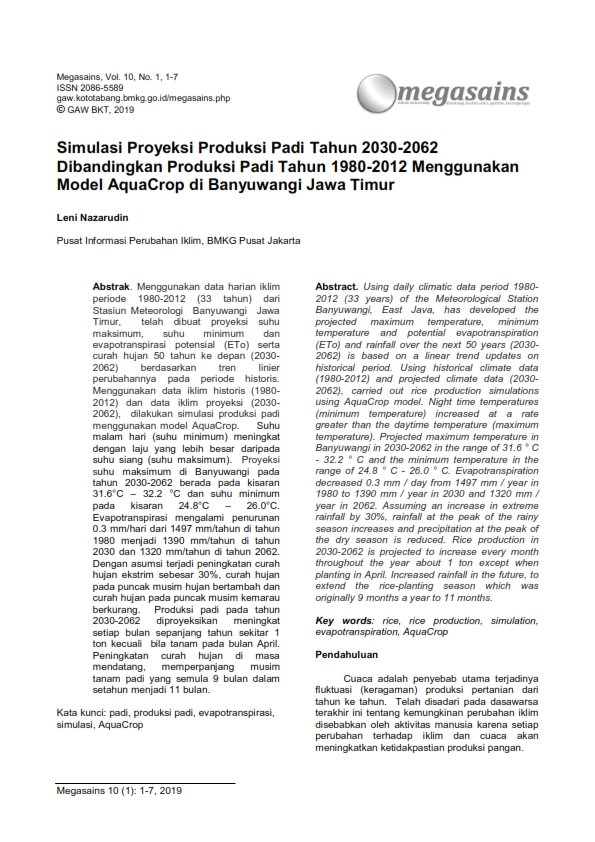Rice Production Projection Simulation for 2030-2062 Compared to Rice Production in 1980-2012 Using AquaCrop model in Banyuwangi, East Java
Main Article Content
Abstract
Using daily climatic data period 1980- 2012 (33 years) of the Meteorological Station Banyuwangi, East Java, has developed the projected maximum temperature, minimum temperature and potential evapotranspiration (ETo) and rainfall over the next 50 years (2030- 2062) is based on a linear trend updates on historical period. Using historical climate data (1980-2012) and projected climate data (2030- 2062), carried out rice production simulations using AquaCrop model. Night time temperatures (minimum temperature) increased at a rate greater than the daytime temperature (maximum temperature). Projected maximum temperature in Banyuwangi in 2030-2062 in the range of 31.6 ° C - 32.2 ° C and the minimum temperature in the range of 24.8 ° C - 26.0 ° C. Evapotranspiration decreased 0.3 mm / day from 1497 mm / year in 1980 to 1390 mm / year in 2030 and 1320 mm / year in 2062. Assuming an increase in extreme rainfall by 30%, rainfall at the peak of the rainy season increases and precipitation at the peak of the dry season is reduced. Rice production in 2030-2062 is projected to increase every month throughout the year about 1 ton except when planting in April. Increased rainfall in the future, to extend the rice-planting season which was originally 9 months a year to 11 months
Article Details

This work is licensed under a Creative Commons Attribution-NonCommercial 4.0 International License.
The author is willing to retain the copyright and grant journal rights to the first publication with works that are simultaneously under license the Creative Commons Attribution-NonCommercial-NoDerivatives 4.0 International. It allowing the others to share the work with recognition of the author's work and the initial publication in this journal.
Authors can enter into separate additional contractual arrangements for the non-exclusive distribution of published versions of journal works (for example, posting them to institutional repositories or publishing them in a book), with recognition of the initial publications in this journal.
Authors are permitted and encouraged to send their work online (for example, in their institutional repositories or websites) before and during the submission process because it can lead to productive exchanges, as well as previous and larger citations of published works.

